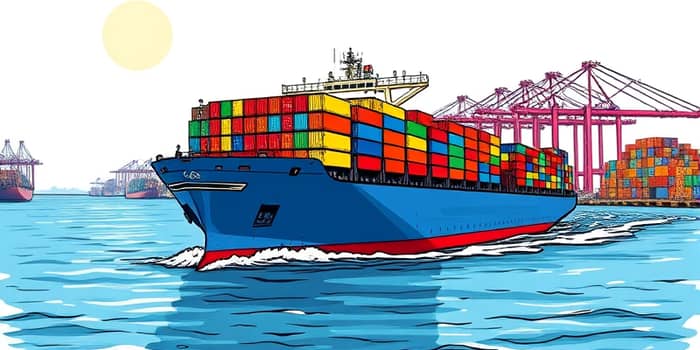
After the tumultuous highs of the pandemic years, global shipping rates are finally settling. Businesses and consumers alike are witnessing the end of unprecedented volatility, as supply chain pressures ease and markets adapt to a post-crisis landscape.
Throughout 2024, ocean freight rates experienced dramatic swings. Rates peaked amid multiple crises—COVID-19 aftershocks, the Suez Canal blockage, the Red Sea disruptions—before gradually easing late in the year. According to Hillebrand Gori, as of early 2025, freight rates remain higher than previous seasons but are becoming less volatile over time.
Shanghai’s container futures suggest a downturn in Asia–Europe rates, projecting averages around $20,000 per container in 2025—still below the $30,000 peaks of 2021. The Drewry World Container Index forecasts 3–4% growth in global container demand for 2025, reflecting a cautious but steady rebound.
Multiple factors are aligning to deliver this newfound equilibrium. First, major bottlenecks at U.S. ports—long a choke point in 2021–2023—have largely receded. Inventory levels, once depleted, have rebounded to healthier thresholds, reducing the urgency of expedited shipments.
Meanwhile, carriers have added capacity, and blank sailings—previously a tool to control overcapacity—are less frequent. Environmental regulations, such as the Mediterranean’s 0.1% sulphur cap, have been integrated into operating plans, allowing carriers and shippers to anticipate costs more accurately.
Regional trade lanes have adapted: Asia–Pacific manufacturing continues to flourish, while Europe benefits from stabilizing demand. The result is a smoother logistics workflow across continents and a gradual return to pre-crisis norms.
Despite overall improvements, the industry must navigate ongoing headwinds. Geopolitical flashpoints in the Middle East force some vessels to reroute via the Cape of Good Hope, adding time and fuel costs. U.S.–China tariff uncertainties and potential labor strikes in European ports threaten short-term disruptions.
A more stable rate environment offers clear benefits. Shippers can engage in better budgeting and cost control, locking in contracts without fear of extreme rate spikes. Consumers, in turn, may see slower price increases on imported goods, as deflationary pressures ease in core goods prices.
Inventory strategies are shifting from reactive emergency stockpiling to just-in-time models, supported by more predictable transit times. Retailers and manufacturers can optimize warehouse use, reducing holding costs and minimizing dead stock.
The Asia–Pacific region remains the growth engine of global trade, driven by robust electronics and machinery exports. Latin America and Oceania recorded volume increases of 8–9% in late 2024, while Europe saw a more moderate 6% rise, constrained by regulatory and geopolitical factors.
Industry leaders agree that shipping rates are moving toward a new normal. While they may not return to the sub-$10,000 levels seen pre-pandemic, moderate growth in international trade volumes and capacity adjustments suggest that rates will remain stable or ease slightly if major disruptors subside.
Shippers should maintain vigilance: monitor geopolitical developments, plan for environmental compliance, and cultivate strategic carrier partnerships that could yield up to 15% in cost savings versus passive approaches. Embracing digital tools for real-time tracking and dynamic routing can further enhance resilience.
The normalization of freight rates is already helping to moderate inflationary pressures on goods and improve supply chain transparency. For businesses, this is an opportunity to shift focus from crisis management to long-term optimization and innovation.
As we approach mid-decade, the global shipping industry is charting a course toward predictability and efficiency. Stakeholders who adapt proactively will reap the benefits of more consistent cost structures and smoother operations, paving the way for sustainable growth in world trade.
References













